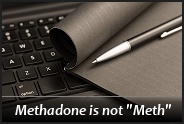 Methadone take homes (or carry outs) are awarded to clients that have demonstrated treatment progress, stability, and personal responsibility. A take home dose of methadone may be earned once a client has met a number of criteria set by each methadone clinic. Each state has its own methadone authority that provides additional guidelines regulating take home award. Consequently, take home medication awards may differ from one clinic to the next, and from one state to the next.
Methadone take homes (or carry outs) are awarded to clients that have demonstrated treatment progress, stability, and personal responsibility. A take home dose of methadone may be earned once a client has met a number of criteria set by each methadone clinic. Each state has its own methadone authority that provides additional guidelines regulating take home award. Consequently, take home medication awards may differ from one clinic to the next, and from one state to the next.
Some clinics provide an automatic take home for Sunday (often because the clinic is closed on Sunday), although a number of treatment programs have discontinued the “automatic” Sunday take home and are now open every day of the week for medication dispensing . This change resulted from a move to increase patient safety and to help ensure that take home medication was provided only to those with a good track record of program success & compliance.
It should be noted that pain management clinics and addiction treatment clinics, both of which provide their patients with methadone, are very different programs and operate with significantly different standards and oversight. Opioid addiction treatment programs are subject to much tighter regulation and require that new participants be seen face-to face everyday in order to be evaluated before they receive their methadone dose.
This is not required of pain management clinics who are able to dispense opioid pain medication (including methadone) without the same level of oversight. Consequently, much of the methadone diversion concerns making the news (including related overdoses) are the result of diversion of methadone provided by the less regulated pain management clinics.
Unfortunately, the general public have often wrongly assumed that addiction treatment clinics were at fault. While diversion of methadone does occur on occasion in both settings, methadone treatment clinics offer much more comprehensive accountability & monitoring measures than do most pain management clinics.
A majority of methadone take home recipients are very responsible with their medication. They take it exactly as prescribed, and store it safely & securely. Many patients have properly utilized their take home medication for years without incident or problems of any kind.
A number of clinics allow their patients to receive up to 13 take home doses requiring an in-person visit to the clinic on the 14th day. Some clinics provide up to a month of take home medication for patients showing long-term stability and responsible handling of their take home medication. Take homes are earned one-at-a-time at specific time intervals as clients move through phases (or levels) in the opioid treatment program.
It is important to note that take home medication is a privilege, and not a right. The award of take home medication is usually a team consensus decision based on a patient’s excellent urinalysis results, consistent attendance to & participation in treatment sessions, and evidence of psychiatric stability and good decision-making ability. If a client relapses or is having a particular problem coping, then take home medication is suspended for the client’s safety, and until the treatment team determines that the client is doing well enough to resume take homes.

 Follow
Follow

 There is a
There is a  I was speaking with someone the other day about methadone and they asked me if methadone was the same thing as “meth”. They had heard about “meth labs” on the news and people being arrested for manufacturing “meth” in their homes to sell illegally on the street. This individual was wondering if “meth” and methadone were the same thing. They are not!
I was speaking with someone the other day about methadone and they asked me if methadone was the same thing as “meth”. They had heard about “meth labs” on the news and people being arrested for manufacturing “meth” in their homes to sell illegally on the street. This individual was wondering if “meth” and methadone were the same thing. They are not! Dr. Jana Burson, in her opioid treatment blog, has written two important and interesting entries on the value of prescription monitoring programs (
Dr. Jana Burson, in her opioid treatment blog, has written two important and interesting entries on the value of prescription monitoring programs ( Anxiolytics are a frequently prescribed classification of drugs that are utilized to reduce anxiety and which may provide some anticonvulsant benefits for those at risk of seizure. The most common of this class are benzodiazepines such as Xanax, Ativan, Valium, Klonopin, or Librium. These medications have helped many people who suffer with generalized anxiety or panic disorder.
Anxiolytics are a frequently prescribed classification of drugs that are utilized to reduce anxiety and which may provide some anticonvulsant benefits for those at risk of seizure. The most common of this class are benzodiazepines such as Xanax, Ativan, Valium, Klonopin, or Librium. These medications have helped many people who suffer with generalized anxiety or panic disorder.


